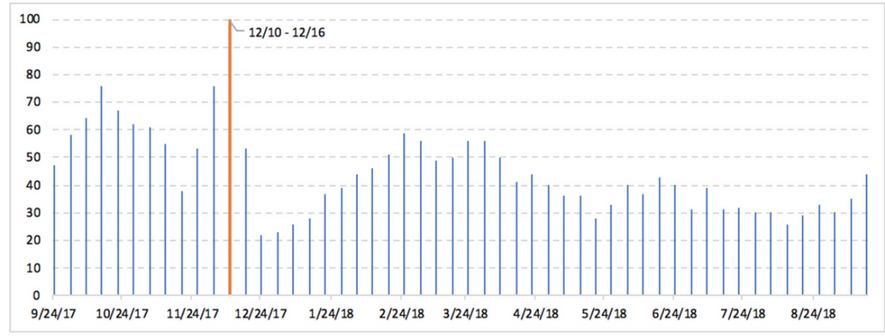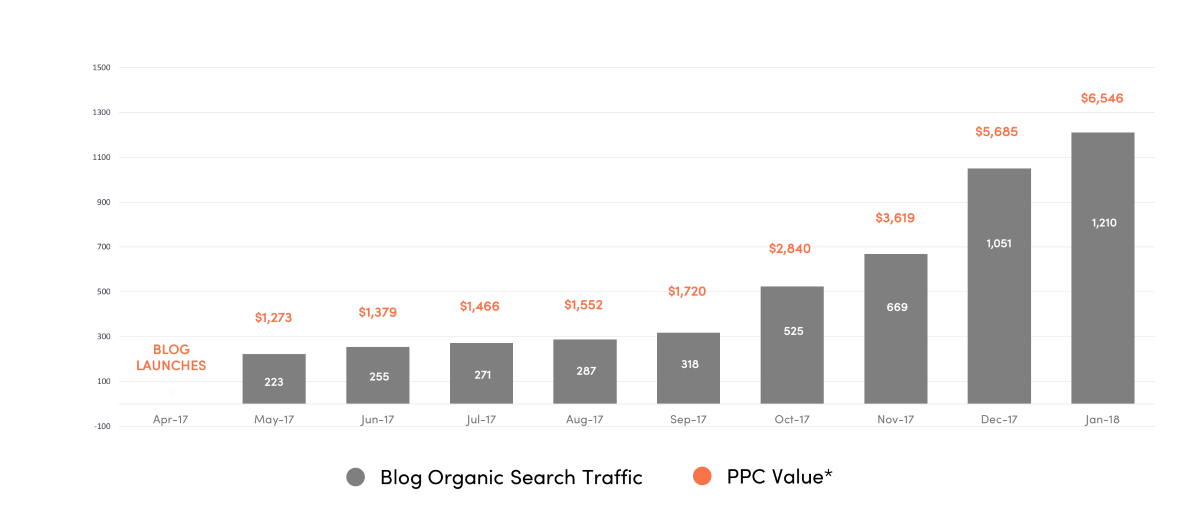
Should Investment Managers Care About SEO?
September 21, 2018
When it comes to search engine optimization (SEO), there are some legitimate roadblocks for many investment managers – particularly those in the asset management space.
For one thing, search engines haven’t historically been a great acquisition channel for their customers. After all, when an RIA needs to replace its emerging markets manager, Google probably isn’t the first place it looks.
Another challenge is that SEO is a new(ish) concept for a lot of financial marketers. For example, it’s tough to find a seasoned financial writer who knows how to optimize blog posts and market commentaries for search engines.
And without a clear strategy and repeatable process for implementing and measuring SEO efforts, ad hoc attempts to “do SEO” usually die on the vine.
Despite these issues, we’ve seen the benefits of SEO for investment managers firsthand, and we believe that most firms can benefit from SEO. In this article, we’ll cover the basics of SEO for investment managers and share six reasons investment managers should definitely care about SEO.
SEO for Investment Managers: A Quick Primer
Before we dive into the benefits of SEO for investment managers, it’s helpful to brush up on the basics. What is search engine optimization, and how does it work for a financial services company?
Most people are familiar with how search engine marketing works from the user’s perspective. You want to know something, you type your question into a search engine like Google or Yahoo, and the search engine brings up thousands of results that may answer your query.
From the marketer’s point of view, the goal is to get your website on that first page of search engine results (called a SERP, or search engine results page) for terms that are relevant to the solutions you provide. In the investment management space, this could be anything from variations of your company name (branded search terms) to the types of services you offer or topics of expertise (non-branded search terms).
In order to nab that coveted first page spot, you need to produce content on your site that the search engine deems first-page worthy. For branded and product/service-related search terms (e.g., “fixed income fund”), you’d typically optimize your site pages for the target keywords. For non-branded and educational terms, blogs usually works better.
In fact, that’s one of the biggest benefits of having a blog – producing content on an ongoing basis that has the potential to rank well in search, increase awareness of your expertise and the solutions you provide, and drive traffic to your site.
6 Reasons Investment Managers Should Care About SEO
As a digital marketing agency for financial services companies, we’ve seen a huge increase in SEO interest from investment managers over the past few years.
Whether you’re an asset manager marketing to RIAs, a wealth manager marketing to high net worth individuals, or any other flavor of investment manager, here are six reasons to consider this strategy.
1. Get more bang for your content marketing buck.
If you’re producing content (blogs, white papers, etc) without regard for SEO, you’re missing out on potential benefits that content could be providing. Once your strategy is in place, it usually takes minimal effort to optimize blogs and other content for SEO. You’re already creating the content – why not use it to drive more traffic to your site?
2. Repurpose old content for big benefits.
The blog posts you published a year ago probably aren’t doing much for you now. However, if you update them with new information, they often have a better chance of ranking well in search than new blogs do.
Here’s an example where we updated and optimized 10 old blog posts for a 1,500 percent increase in monthly search clicks.
BLOG OPTIMIZATION CASE STUDY

3. Elevate your brand awareness and credibility.
When your prospects repeatedly see your site pop up for investment-related searches, they not only learn more about the solutions you provide, they also start to see you as a thought leader in those areas.
3. Stay ahead of the competition.
Large investment managers and tech-savvy fintech companies have been investing in SEO for years, and today even smaller firms are starting to care about SEO (to see who’s winning at wealth management SEO, check out Hearsay’s interesting report here). It can take 6-12 months for SEO efforts to start reaping benefits, so the longer you wait, the harder it will be to catch up with your competitors.
4. Inform other parts of your marketing.
Search engine data can be used to identify trending topics, write compelling headlines, and promote content at the optimal time to maximize its reach.
For example, in the runup to last year’s tax legislation changes, “FIFO”-related terms saw a huge spike in search volume. Google recognized that this was a trending topic and, in its thirst for fresh content on the subject, ranked “FIFO” optimized blogs from investment managers alongside articles from the Wall Street Journal and Bloomberg.
GOOGLE TRENDS | INTEREST OVER TIME FOR “FIFO”*

5. Move prospects through the funnel.
Retargeting website traffic is an effective way to turn anonymous site visitors into qualified leads and, eventually, clients. The more traffic you capture through search, the more opportunities you have to retarget those visitors with sponsored content and/or display ads on LinkedIn and other platforms.
6. Measure the results.
One of our favorite things about SEO is that it’s easy to quantify the ROI. Not only can you track the upward trend of search traffic to your site, you can compare it to the amount you’d need to spend on paid search to drive the same amount of traffic.
Here’s an example where we increased blog organic search traffic from zero to 1,200+ visitors/month within 9 months of blog launch, driving the equivalent of $26,080 in paid search (PPC) value:
ROI OF BLOG SEARCH TRAFFIC

Ready to ramp up your SEO efforts? SuperScript is here to help! We’re a full-service digital marketing agency that only works with financial companies and advisors. From expert content creation to savvy digital promotion, contact us to find out how we drive measurable marketing results.
*Source: Google Trends. Numbers represent search interest relative to the highest point on the chart for the given region and time. A value of 100 is the peak popularity for the term. A value of 50 means that the term is half as popular.